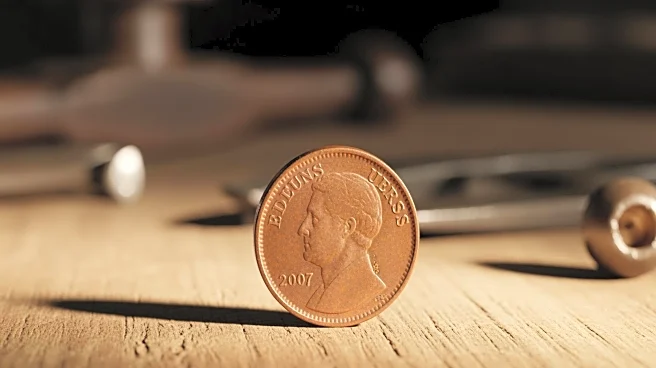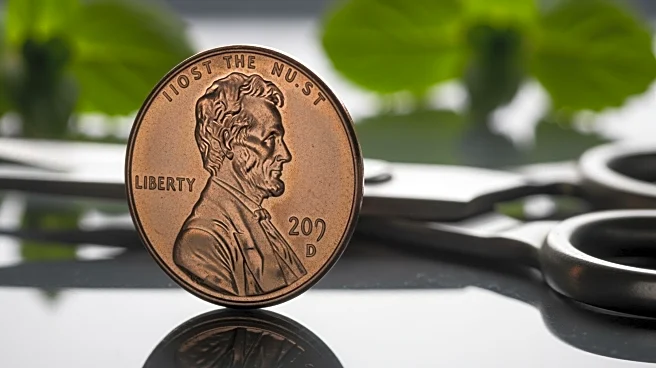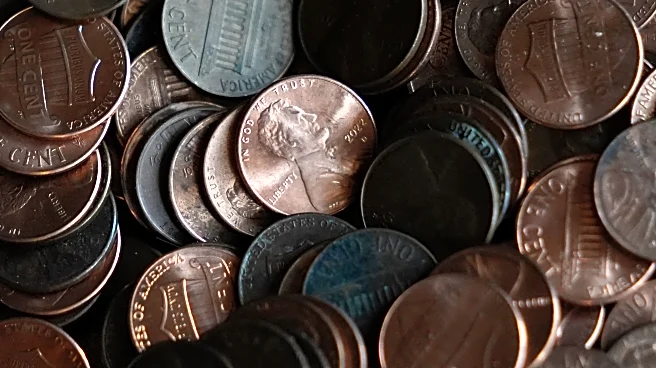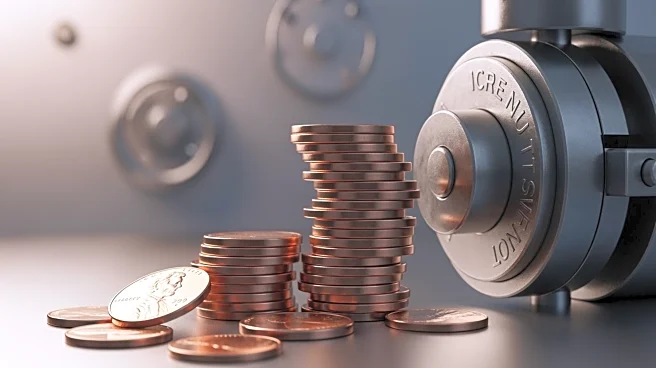What's Happening?
The U.S. Mint in Philadelphia has ceased production of the penny, marking the end of a tradition that began in 1793. The decision was driven by the increasing cost of production, which has surpassed the coin's
face value. The final pennies were stamped with a special marking and will be auctioned off. This move is expected to save the U.S. government approximately $56 million annually. The penny's production cost was 3.69 cents per coin, significantly higher than its one-cent value. The discontinuation follows President Trump's directive to halt penny production, citing wastefulness.
Why It's Important?
The cessation of penny production reflects broader economic considerations, as the cost of manufacturing the coin has become unsustainable. This decision could influence future policies regarding other coins, such as nickels, which also cost more to produce than their face value. The move may impact retailers and consumers, as businesses adjust to the absence of pennies in transactions. The savings from halting penny production could be redirected to other areas of public spending, potentially benefiting taxpayers.
What's Next?
While the penny remains legal tender, its discontinuation may lead to changes in pricing strategies, with retailers possibly rounding prices to the nearest nickel. The government may consider similar actions for other coins, like the nickel, which also incurs high production costs. The Common Cents Act, which aims to formalize the discontinuation of the penny, is yet to be passed in Congress.
Beyond the Headlines
The decision to end penny production highlights the evolving nature of currency in the digital age, where cash transactions are increasingly replaced by electronic payments. This shift may prompt further discussions on the necessity of physical currency and its role in modern economies.













